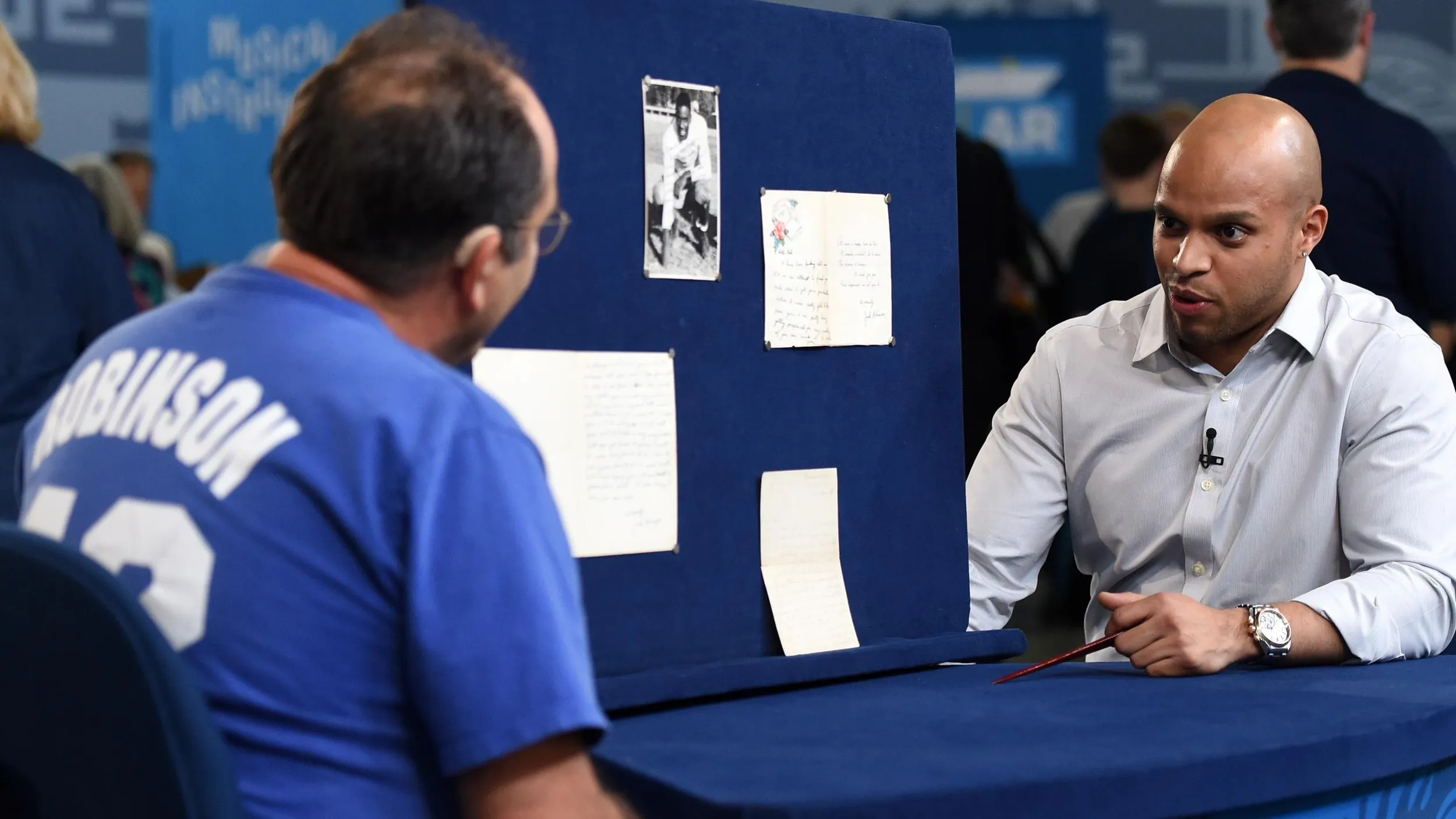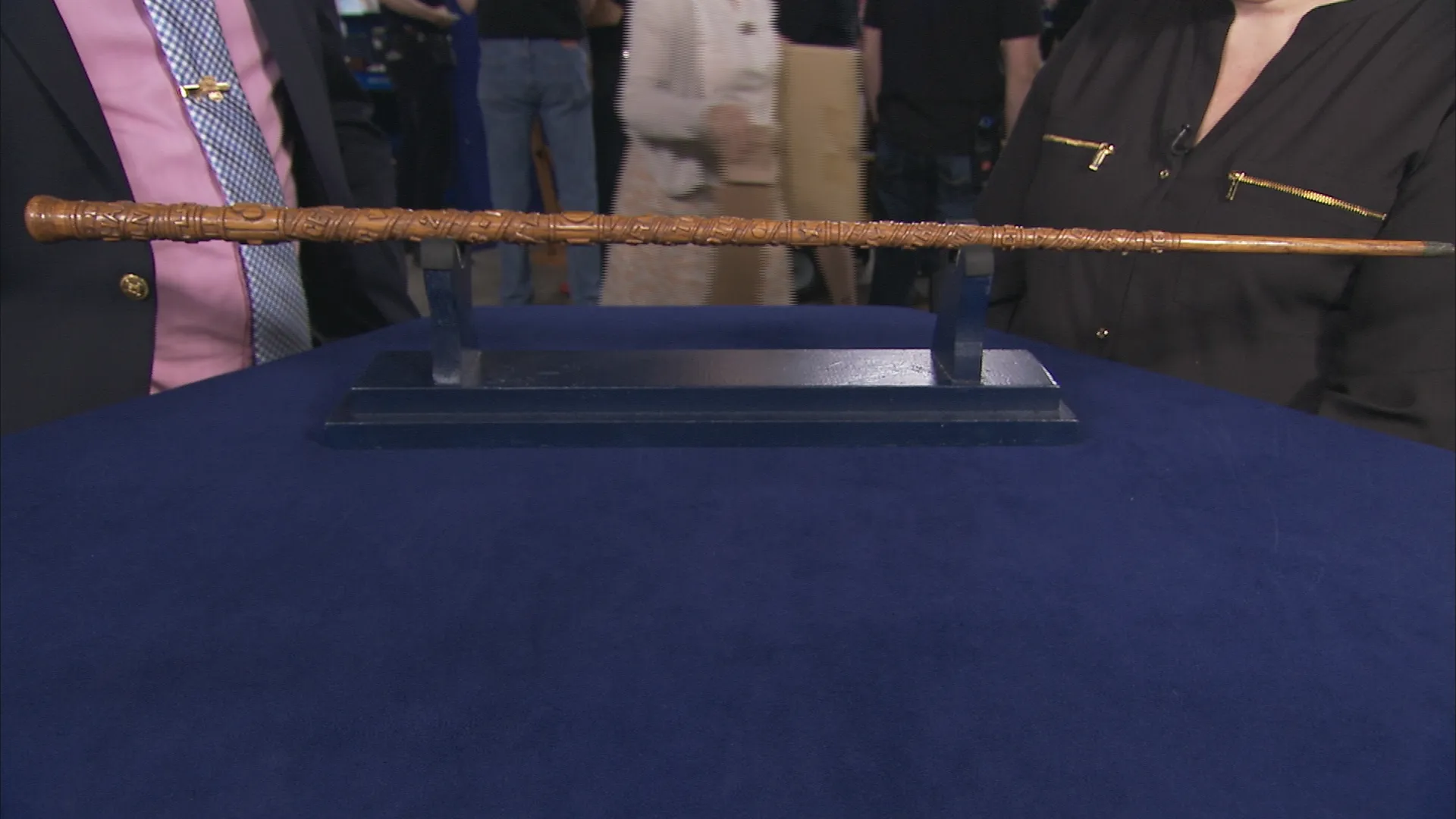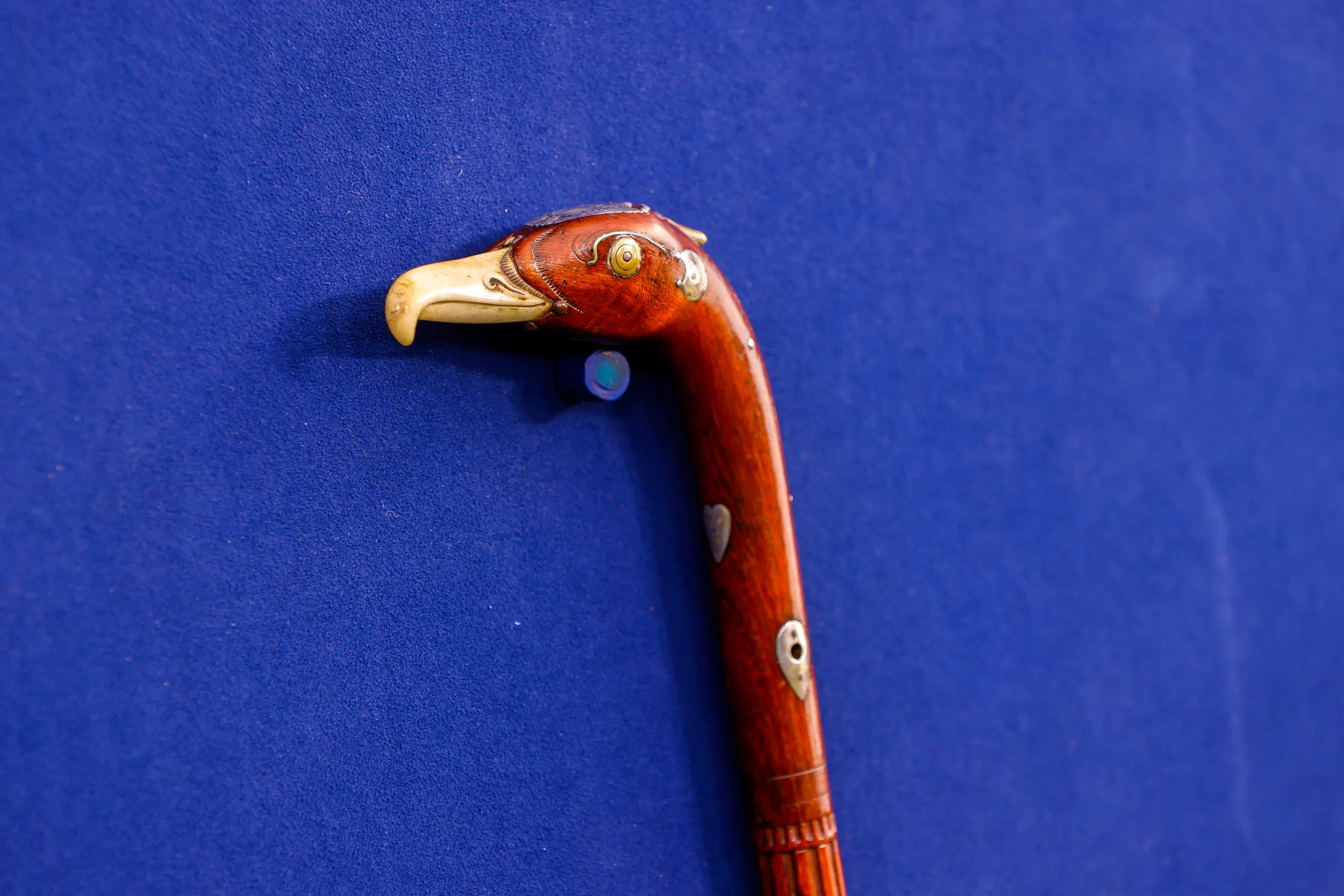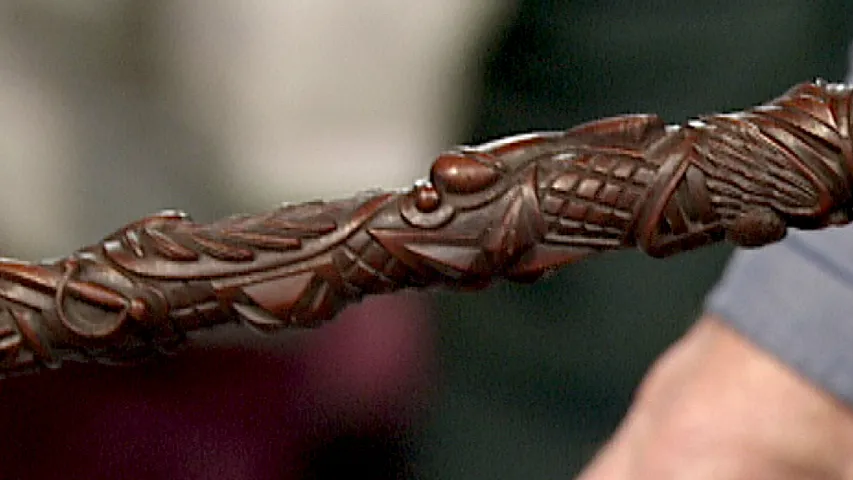GUEST: Well, I brought in a walking cane that I had found at a Goodwill in Phoenix, Arizona. And it's a walking cane that I believe is from the Civil War.
APPRAISER: So you bought it at the Goodwill store.
GUEST: Yes, I did.
APPRAISER: How much good will did it cost you?
GUEST: True to the penny price was $6.99.
APPRAISER: Big purchase.
GUEST: A huge purchase.
APPRAISER: This one is cool from top to bottom.
GUEST: Okay.
APPRAISER: We have on the handle it says, "Made on Stone River Battlefield," which is in Murfreesboro, Tennessee. And the battles were actually named on the Union side by the body of water that it was nearest. Confederates would refer to them as the Battle of Murfreesboro.
GUEST: Okay.
APPRAISER: So we know from the first sentence that it's a Northern cane.
GUEST: Okay.
APPRAISER: But it says, "Made on Stone River Battlefield and presented to Hiram Parker on the fourth of March, 1865, by his son, George S. Parker, of the 21st OVLA,"
the Ohio Volunteer Light Artillery.
GUEST: Okay.
APPRAISER: He joined up on January 31, 1863, and served all the way to July 21, 1865.
GUEST: Wow.
APPRAISER: So that two years worth of service, they spent a lot of it in Tennessee and Alabama on garrison duty.
GUEST: Wow.
APPRAISER: And that would have been when this was carved…
GUEST: Wow.
APPRAISER: …which is an important fact on this cane.
GUEST: Okay.
APPRAISER: Because a lot of these canes, they're something that was done years afterwards.
GUEST: Okay.
APPRAISER: And they were done for the veterans when they actually needed a
cane.
GUEST: Okay.
APPRAISER: But this one is cool because of that date. It's war date. It's beautifully done. You notice we've got the snake. And you see a lot of snakes on carved canes…
GUEST: Yes.
APPRAISER: …because it flows with the general design. This one, in addition to the snake, we've got the cannon.
GUEST: Oh, I thought that was a bullet.
APPRAISER: No, it's a cannon.
GUEST: Oh, unbelievable.
APPRAISER: It's a wonderful cannon. It's just beautiful. And that's what an artilleryman would want.
GUEST: Wow.
APPRAISER: And, "Hey, Dad, I'm in the artillery, I'm proud to serve my country, and I even have a cannon on your cane."
GUEST: That's awesome.
APPRAISER: And as the snake goes down, down by the tail, what's on the end?
GUEST: It looks like an artillery round.
APPRAISER: What's cool is that it's a Spencer carbine cartridge. It's the metallic part from the seven-shot Spencer repeating rifle, or carbine.
GUEST: Wow.
APPRAISER: Which is one of the things that helped them win the war. It was like having a machine gun at that time.
GUEST: Wow.
APPRAISER: And that one's beautiful, and it's cool. What a way to end a work of art. What's your gut feeling on what it's worth?
GUEST: I don't know. It's more than $6.99, but I personally thought maybe $1,000. My wife, Joanne, thinks maybe $5,000, but we really don't know, we
don't know.
APPRAISER: Well, Joanne, I'm sorry-- it's not quite $5,000, but it's going to hit right in that middle.
GUEST: Wow.
APPRAISER: If I were going to insure this piece, I would insure it for between $2,000 and $3,000.
GUEST: Wow, that's unbelievable.
APPRAISER: Which is one heck of a return on $6.99.
GUEST: Yeah, what a great find.








